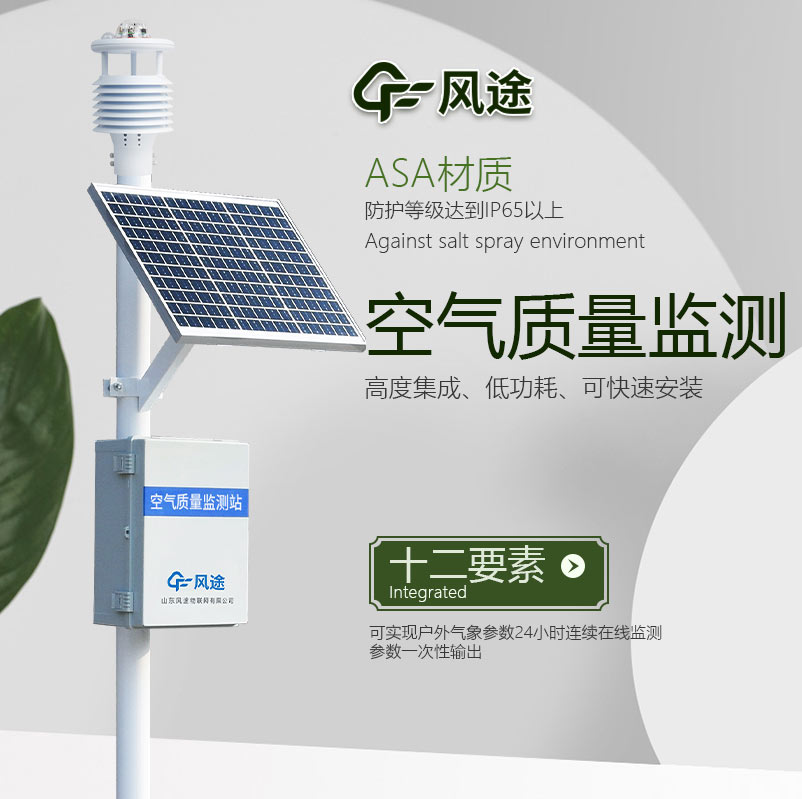Shandong Fengtu IOT Technology Co., Ltd
Sales Manager:Ms. Emily Wang
Cel,Whatsapp,Wechat:+86 15898932201
Email:info@fengtutec.com
Add:No. 155 Optoelectronic Industry Accelerator, Gaoxin District, Weifang, Shandong, China

Sales Manager:Ms. Emily Wang
Cel,Whatsapp,Wechat:+86 15898932201
Email:info@fengtutec.com
Add:No. 155 Optoelectronic Industry Accelerator, Gaoxin District, Weifang, Shandong, China
time:2024-05-16 08:46:58 source:Weather Station viewed:739 time
The rapid development of industrialisation has led to air pollution, which refers to the accumulation in the atmosphere of substances released by human activities or natural processes to a certain extent, causing negative impacts on human beings and the environment.
China's air pollution is changing from the traditional sooty type to a composite type in which multiple pollutants coexist. Although pollution caused by coal burning remains serious, vehicle exhaust pollution has also become more prominent with the increase in the number of vehicles, bringing new problems such as haze, photochemical smog and acid rain.
China's air quality monitoring focuses on six indicators: sulphur dioxide, nitrogen dioxide, respirable particulate matter, ozone, carbon monoxide and PM2.5. Measures to improve air quality include planting trees, using new energy sources, developing public transport, controlling vehicle emissions, regulating polluting enterprises, and reducing dust pollution caused by building construction and so on.
Many cities at home and abroad are now focusing on improving air quality by setting up gridded micro air monitoring stations. These monitoring stations are widely deployed in critical areas such as industrial zones, high-traffic areas and urban highways with the aim of effectively monitoring air quality and taking action to safeguard public health.
The gridded air quality monitoring micro-stations integrate a wide range of sensors for monitoring particulate matter, sulphur dioxide, carbon monoxide, nitrogen dioxide, ozone and total volatile organic compounds, etc. They are capable of accurately monitoring particulate matter of different particle sizes including PM1.0, PM2.5, PM10 and total suspended particulates (TSP), and provide an efficient technical means for urban air quality monitoring and management.

Dust detectors serve as vital tools for intelligent management of dust emission pollution, enabling real-time monitoring of dust concentration to provide data support for subsequent management measures.A dust detector can collect real-time concentrations of particulate matters such as PM10 and PM2.5...
Soil Moisture Monitoring System is a GIS-based information management system, which is capable of real-time dynamic monitoring and management in the whole region. It is a soil moisture monitoring instrument suitable for use in agricultural production, scientific research and land resource management...
Small automatic weather station equipment is the need of modernization of meteorology. This is a class of intelligent automatic station miniaturized system based on GPRS network, which mainly consists of upper computer and lower computer, GPRS communication module is used to transmit data, using wir...
Today, I would like to recommend a practical soil moisture monitoring system.This equipment is extremely convenient in installation. It adopts a solar power supply mode and does not require additional maintenance work, greatly saving manpower and time costs. In terms of data stability, accuracy and...